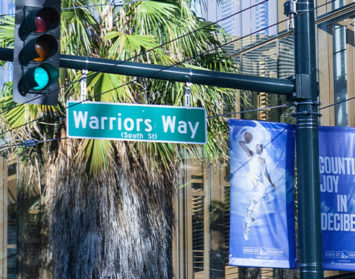Sooner or later, somebody needs to begin to apply basic economics to try to sober up San Diego’s commercial real estate market, given the drunken rash of building sale transactions in our recent past.
Hopefully, we can start doing so here before even more people — in this case, those who lease office space — get hurt.
First, we have to understand the economic premises that identify the problem. It begins with supply and demand. The “push” economic model observes that the cost of goods and services rises as demand increases and supply decreases. The “pull” model ignores supply and demand principles and instead relies on a more draconian tactic in which one tries to artificially increase the cost of goods simply because they cost more due to inflation and other factors.
Among those forces is the “greater fool theory” that suggests that one can pay more for an asset than it’s worth as long as he can sell it at an even higher price — to a greater fool. Of course, the use of “greater” in the comparative sense rightly assumes there’s a lesser fool — the corporate sap who paid an exorbitant price for the building. Such buyers think San Diego’s office market is the “hottest girl in the bar,” not realizing they have four-inch-thick beer goggles on and that the “girl” might actually be a transvestite with a beard.
It’s this “lesser” and “greater” fool’s game that plagues our city’s commercial real estate, in particular the office space market.
Most San Diego submarkets have thousands of square feet of vacant and otherwise available square feet of space to lease out; yet in recent years, the under-occupied buildings have been bought and sold, in some cases numerous times, for prices that defy reason.
Every time a sale takes place, the county tax assessor takes note and adjusts the property tax to roughly 1.2 percent of the building’s new sale price. Let’s take a 300,000-square-foot building that sold in the past for say, $30 million, but now just sold for $120 million. That equates to a $90 million increase in the building’s tax basis, or an additional $1.08 million per year in property taxes. Divide the increase in the property tax by the building’s total square feet and then again by 12, and we get an additional 30 cents per square foot in monthly operating expense that the landlord then tries to foist onto the back of his office tenants. This assumes all 300,000 square feet in the building are being occupied which, of course, is not the case.
However, there’s more to it than simply passing along increased property tax costs. Assuming the building owner wants to make some kind of return on the glutted price he paid for the building, say 7 percent, the tenants would need to pay an additional $2.35 per square foot each month to give the owner that rate of return. Now, add and stir in the operating expenses involved in running the buildings, including the property taxes, to fetch an additional $1.15 per square foot monthly cost. Assuming full occupancy, which is rarely the case, the base rent ends up at $3.50 per square foot per month. For the typical small 5,000-square-foot user, that translates to $17,500 a month.
But wait, there’s more: Add to the $3.50 per square foot example whatever costs there may be for tenant improvements, typically 50 cents a foot, and the really big component, landlord leverage.
The leverage factor
Let’s suppose a typical situation in which the building owner borrowed $100 million to purchase the $120 million property at a 5 percent interest rate. That produces a positive arbitrage of 2 percent on the $100 million alone. Now, assuming a more atypical situation in which the building was 100 percent leased, this arbitrage would make the owner’s return pencil out at substantially lower rental rates. Since very few office buildings in San Diego are anywhere near fully occupied, that blows whatever the leverage potential might have been.
I’ve used a fixed 5 percent number in the above assumption, but the fact is many building owners have floating interest rates that are trending upward and are very likely to continue to do so. Add the average 22-month period in which vacant space in downtown San Diego’s office buildings remains unoccupied and one can see why building owners aren’t sleeping all that well at night. Indeed, the landlord leverage concept can and does work both positively and negatively.
The point is this: The “greater fool theory” is an active strategy on the part of landlords looking for relief in today’s inflationary office market. They’re looking for bigger chumps than themselves to cover their excesses.
The good news is tenants have many options in terms of how and where to lease space throughout the San Diego metropolitan area. We’ll discuss those options in future columns.
Stay tuned.
Jason Hughes is founder of Hughes Marino, an award-winning commercial real estate company with offices across the nation. A pioneer in the field of tenant representation, Jason has exclusively represented tenants and buyers for more than 30 years. Contact Jason at 1-844-662-6635 or jason@hughesmarino.com to learn more.









